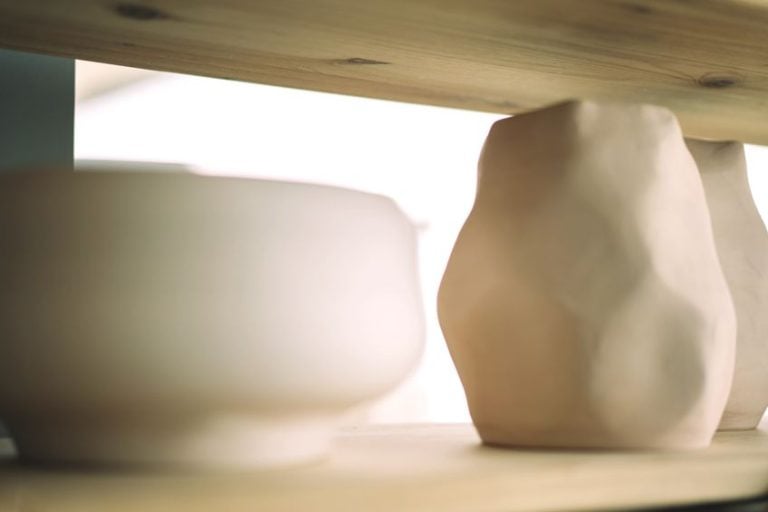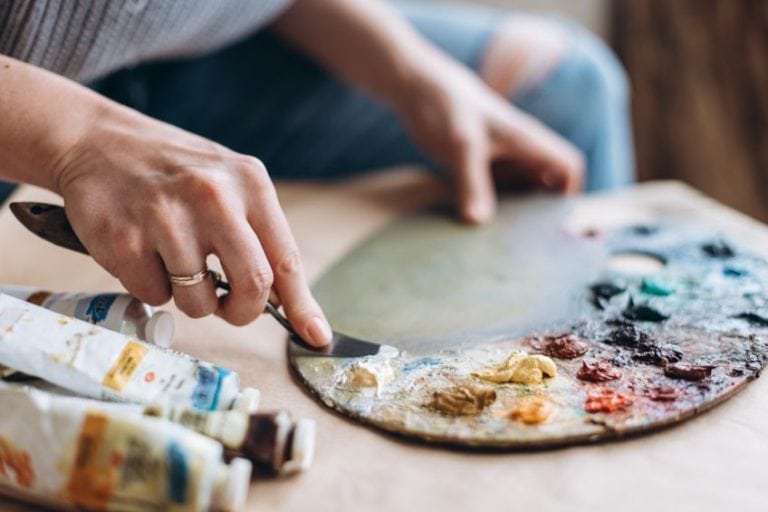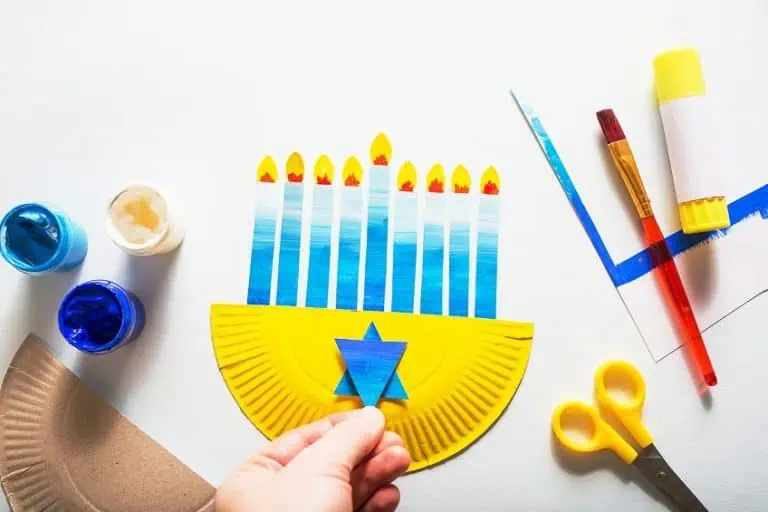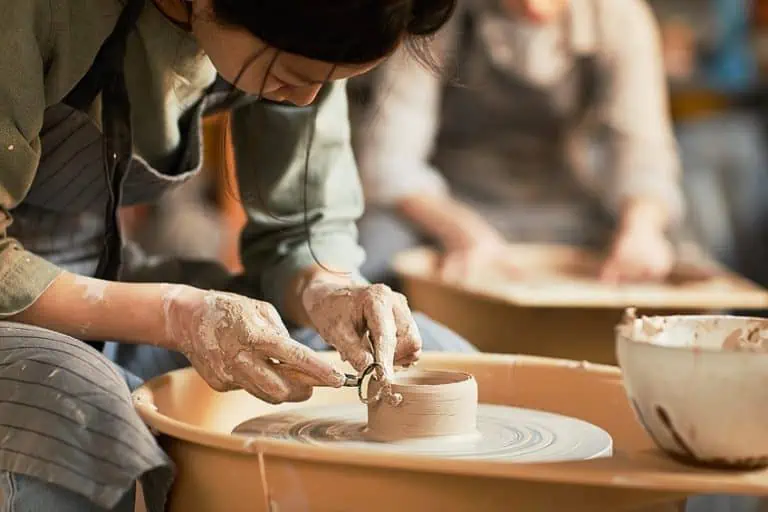Best Wood for Wood Burning – The Top Options for Wood Burning Crafts
This post may contain affiliate links. We may earn a small commission from purchases made through them, at no additional cost to you.
The art of wood-burning is mesmerizing, allowing us to take a medium that has been around since the dawn of time and use it to create beautiful works of art that have a unique look and feel to them. Wood burning, in general, seems to have exploded in popularity recently. This is due to tools needed for the craft becoming more readily available to the general public, not to mention more affordable. This means that there are loads of newcomers to the art form, much of which are still learning the ropes, developing their technique, and mastering their tools. This being said, one commonly overlooked factor for newcomers is the type of wood they use, so let’s have a look at what the best wood for wood burning is, what makes them ideal, and how to use them effectively.
Table of Contents
Is Softwood or Hardwood Better for Woodburning?
While you could use any type of wood for wood burning, there are certain wood types that make it a lot easier for you to go about your craft. When you’re burning wood, you’re going to want your wood to offer the least resistance possible, this not only ensures that your job is that much easier, but it also reduces the strain on your wood-burning tips. This begs the question, what types of wood offer the least resistance?
Well, the argument could be made that softwood is the best wood for wood burning in this scenario because it offers the least resistance, plus it’s the easiest to cut and mold. While this is true, not all softwoods are conducive to pyrography or wood-burning, this is mainly due to the inherent direction and/or density of their grain.

This is actually what the distinction between softwood and hardwood is. Wood types with a grain that is sparsely spaced are softer and easier to cut and manipulate, whereas woods that have a grain that is more densely packed are considered hardwoods as they are a bit more challenging to work with. Even though this is the metric used to distinguish hardwood from softwood, the grain density of any given wood species tends to be on a spectrum, as opposed to being either “tight” or “loosely” spaced.
This is why even though some woods are classified as hardwoods or softwoods, they still aren’t considered to be the best wood for pyrography. Fortunately, wood burning has been practiced for a really long time, and through the process of trial and error many crafters and woodworkers alike have narrowed down a few wood species which are objectively the best wood for pyrography and wood burning.
Knowing all of this, do your best to research the wood species on offer at your local hardware or lumber yard to avoid any unnecessary difficulties.
What Wood Is Best for Pyrography/Wood Burning?
Now that you know what the difference between softwood and hardwoods is, let’s have a look at which wood species are best for wood-burning crafts. It’s important to remember that there are loads of other wood species that can be used for wood-burning crafts, but the ones mentioned below will make your next pyrography project that much easier.

Maple Wood
Maple wood is the ideal material for all manner of crafting disciplines, not to mention things like furniture and even bed frames! Maple is fairly sought after all over the world because it is readily available, easy to work with, and tends to respond really well to things like exterior coatings as well as wood treatments like a wood stain. In the art of wood-burning, maple works particularly well because of how soft the wood is.
As we mentioned previously softwoods provide less resistance than hardwoods, and because maple is particularly soft it allows wood burning tips to cut through it like butter.
This is because the grain of maple wood is essentially non-existent. Besides being easy to cut through, Maplewood also responds well to toning through the use of heat, with shading being consistent across the surface. Even though maple is classified as hardwood, it is one of the softest woods out there. Woods like these are ideal for decorating too because they accept color really well, this means that using color pencils or paint on your pyrography artwork will work beautifully if you choose to use maple wood for the art of wood-burning.
Willow Wood
If you’re looking to get a wood that’s a bit different compared to other wood types out there, why not give willow wood a try? This wood can be a bit challenging to find depending on where you live and how readily available it is. On the upside, if you do manage to get your hands on some, you will be pleasantly surprised at how great this wood species is for wood burning. While willow is classified as a hardwood, it works really well when exposed to wood burning tips, it melts like butter and even tones evenly if you’re into more advanced aspects of pyrography.

Like maple wood, the wood grain texture is barely visible, so even though the grain is tightly packed it is soft enough to ensure that your wood-burning art is of good quality and won’t fade over time. Willow wood, like maple, also has a great color to it. It has a unique off-white/yellow hue capable of creating beautiful color tones when exposed to direct heat, and if you have some skill toning using your wood-burning tool, you could very well create some really unique and interesting artwork using this type of wood.
Basswood
Okay so right off the bat it’s worth mentioning that basswood is one of the most popular wood types on the market for the craft of wood burning. In fact, there are professional pyrographers that swear by this wood species for all of their pyrography art, plus it’s pretty versatile, so having some laying around is always helpful. What makes this wood ideal for wood burning is pretty much the same thing that makes most of the other woods on this list ideal; it is soft and easy to work with. Also, like most of the wood species on this list, basswood is classified as a hardwood, but because its heartwood is really soft and malleable, it tends to be one of the best materials for pyrography.
Besides being easy to work with, basswood is abundant in the wild and readily available for purchase at most lumber yards and/or hardware retailers.
Because it’s so cheap and is capable of producing workpieces of such high quality, it is not only used for wood-burning applications but can be found in the construction and crafting of musical instruments too. Basswood tends to hold color and tonal changes really well, although you might notice that toning done using a wood-burning tool might not be as consistent compared to using wood species like maple or aspen. All in all, basswood is guaranteed to leave you impressed should you choose to use it for your next wood-burning project.
Poplar Wood
They say that the environment we grow up in has a huge impact on the type of person that we grow into, and nowhere is that better illustrated than with the wood of the poplar tree. Poplar trees tend to grow in temperate climates, typically locations with ideal weather and nutrient-rich soil to allow them to grow as big and as strong as possible. All of this being said, it comes as no surprise that poplar wood is considered to be one of the best woods out there for wood-burning crafts.
Although poplar wood is a hardwood like many of the others we’ve looked at so far, its sapwood and heartwood are so soft that you’re barely able to see the grain outlines. As we know, softwoods are great for wood burning as they provide less resistance, but popular has the added advantage of smelling pretty good too (if that’s something you’d like out of your workpiece)

Poplar wood is known for being pliable enough to work with while remaining tough enough not to render treatments like wood stain, paint, or color pencils ineffective. One thing that you should look out for when working with poplar wood is the green tint that seems to appear on smaller cuts of poplar board. This can be distracting to the eye and be a bit frustrating to work with when wood burning.
Poplar wood is also really cheap and can be purchased virtually anywhere wood is sold, which is great if you’re just starting out with wood burning or pyrography and are looking for a cheap yet effective wood that you can use to develop your skills on. Be sure to check your poplar wood for proper aging storage before you buy.
Pine Wood
Pinewood is used for pretty much every woodworking discipline out there, and pyrography is no exception. Why is pinewood a good wood for pyrography? Well, besides meeting the requirement such as being easy to work with, soft, and durable, it is also pretty much of the most readily available wood types not just in the US but in most parts of the world too. Pinewood is really cheap, which means it is often used to make furniture, installation art, toys, countertops, and various other things. Pine can also be found in various pre-cut forms for your convenience, which saves you some time and money in the preparation process for your next pyrography art piece.
There is a drawback to using pinewood for all of these applications (including wood burning).
The grain, texture, and overall color tone of pinewood tend to be a bit inconsistent, with knots and dark spots being a common problem. This means that you’ll have to do quite a bit of sanding and filling if you’re not willing to pay a bit extra for some “premium” boards at your local hardware or lumber yard. Although this makes it a great wood to practice on, it will mean that you’ll encounter lots of hard spots while working with your wood-burning too, which can lead to bumps and inconsistencies in your cuts. The irregularities in the tone of pine also mean that it’s exceedingly frustrating to shade using heat, but it’s a good wood to have around especially if you’re on a budget.
Can You Burn Pallet Wood?
Wood burning is a craft that often involves lots of experimentation as your skill level improves. You might often find yourself wondering what types of wood you could use for your next workpiece. This is great because working with different wood types will help improve your adaptability and expose you to new possibilities for future workpieces. One common question amongst new pyrographers is “can you burn pallet wood?”
This is a great question considering that pallet wood is cheap and readily available, but it’s a tricky question to answer. Pallet wood (as the name suggests) is taken from loading pallets used to store and move things in large quantities. The problem with pallet wood is that you don’t know what type of wood you’re working with. For all you know, it could be pressure treated, rotting on the inside, or a wood that’s completely unconducive to wood burning.

Unfortunately, unless the panels of the pallet have been marked to indicate what kind of wood they’re made of, there really is only one way to find out. If you decide to use pallet wood for pyrography, it’s important to take the right precautions to ensure your safety, this includes wearing a respirator face mask, some gloves, and ensuring that your workspace is well-ventilated.
All of this being said, pallet wood can be used for wood burning, but you’ll essentially be taking a bit of a gamble if you don’t know what type of wood you’re working with. It really could go either way, but we recommend sticking to some of the wood types we mentioned previously if you’re relatively new to wood burning for the safety of you and those around you.
Safety When Working with Pyrography Pens
While pyrography is pretty straightforward, there are certain things that you need to watch out for to ensure your safety. Keep in mind that you’ll be working with direct heat, which could potentially burn you and things surrounding you if you are careless. Here are a few things you should keep in mind when working with a wood-burning/pyrography pen.
Always keep your hands away from the tip of the wood-burning pen! Lots of people who get into pyrography feel that it’s fairly similar to fine line work in sketching or pen work. While this might be true, you should never give in to the instinct to lower your grip on the pen for better leverage, or you will burn yourself. Instead, adjust your angle or approach or consider changing the chuck and wood-burning tip you’re using.
Besides, you should always be wearing gloves graded for this application.
You should also do your best to remain conscious of things around you, and your own actions. You’d be surprised how many common household items are extremely flammable, and the last thing you want is to set your workspace on fire. Always be conscious of the objects around you and where you place your pyrography pen when you’re not using it, especially if it is still hot.
Make sure not to get too confident either. In any discipline, it’s easy to become complacent with safety precautions if you have been doing it for a long time. Always work on a steady surface like a dedicated workbench with a wood-burning cutting board. Also, ensure that you always use pliers and/or special tools to remove your wood-burning tips and chuck from your pyrography kit.

Finally, always ensure that the pen is off when you leave your workspace. Even if you have a wood-burning cutting board on your work table, the potential damage an unattended pyrography pen can cause when left on is not pretty. Always ensure that your pen is unplugged and that the power source is turned off when leaving your workspace.
Now that you know what the difference between hardwood and softwood is, what some of the best wood species for wood burning are, and how to handle your pyrography pen responsibly, why not get out there and put some of your newfound knowledge to the test? Remember to always wear the appropriate personal protective gear and to always be conscious of your actions when working with directed heat and flammable materials.
Frequently Asked Questions
Is Pyrography the Same as Wood Burning?
While these words are sometimes used interchangeably, they are used to identify two distinct disciplines. While wood-burning refers to the practice of etching, scoring, or embossing on wood alone, pyrography refers to using these techniques to create designs on any material using directed heat.
Is It Hard to Learn Pyrography?
While it might seem like a complicated art form to those that haven’t tried it before, the learning curve is actually quite small. It can take a while to get the hang of working with wood in this manner, but once you have a feel for the material and your pyrography pen you will develop your own technique and unique style.
What Materials Can You Do Pyrography On?
In the past, the art of pyrography was primarily done on wood. This is because the name literally means to write with fire, and since wood is the material most commonly associated with fire, it is the most commonly used. However, you can practice pyrography on ivory, leather, paper, bark, and even certain types of plastic.
In 2005, Charlene completed her wellness degrees in therapeutic aromatherapy and reflexology at the International School of Reflexology and Meridian Therapy. She worked for a company offering corporate wellness programs for several years before opening her own therapy practice. In 2015, she was asked by a digital marketer friend to join her company as a content creator, and it was here that she discovered her enthusiasm for writing. Since entering the world of content creation, she has gained a lot of experience over the years writing about various topics such as beauty, health, wellness, travel, crafting, and much more. Due to various circumstances, she had to give up her therapy practice and now works as a freelance writer. Since she is a very creative person and as a balance to writing likes to be active in various areas of art and crafts, the activity at acrylgiessen.com is perfect for her to contribute their knowledge and experience in various creative topics.
Learn more about Charlene Lewis and about us.







